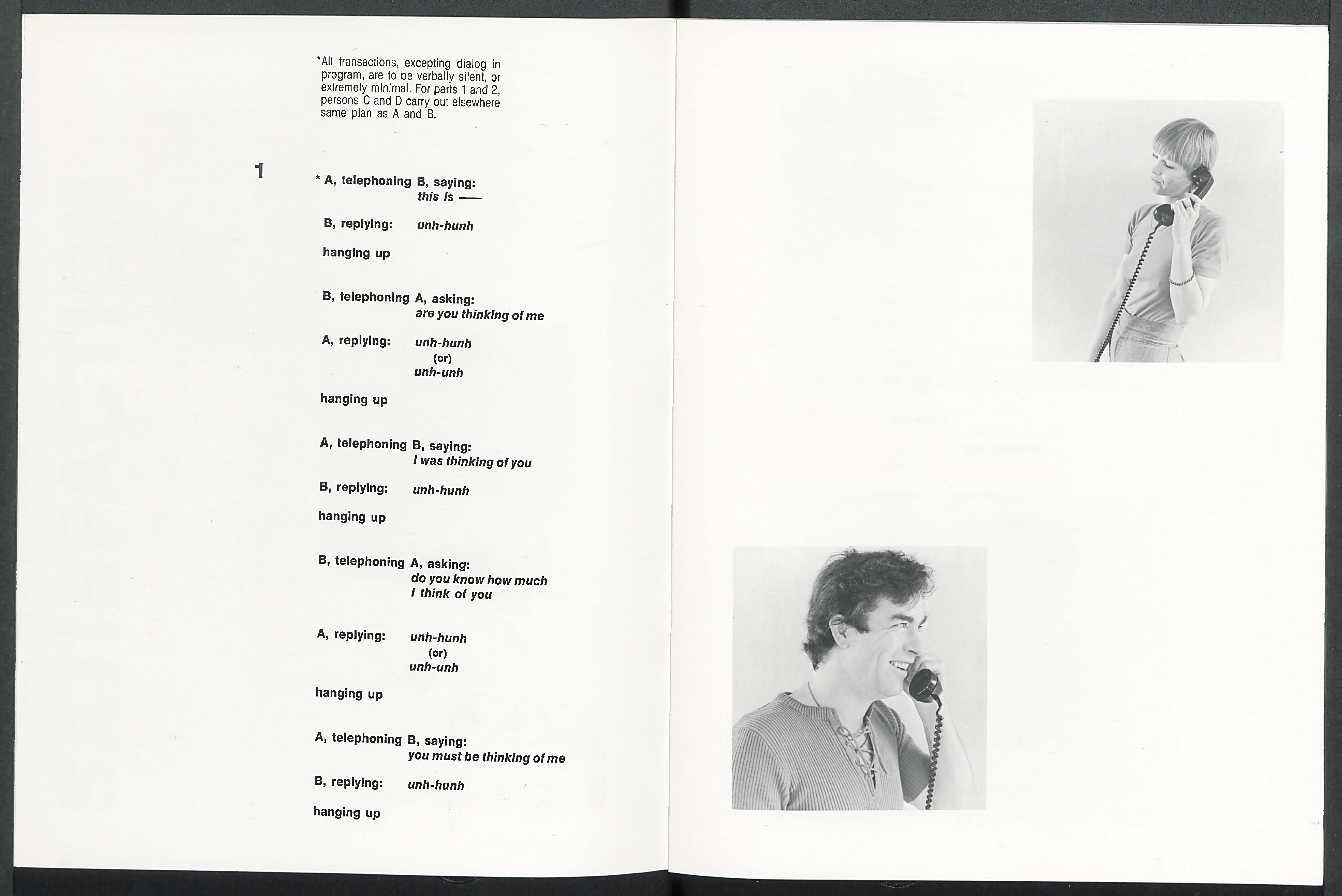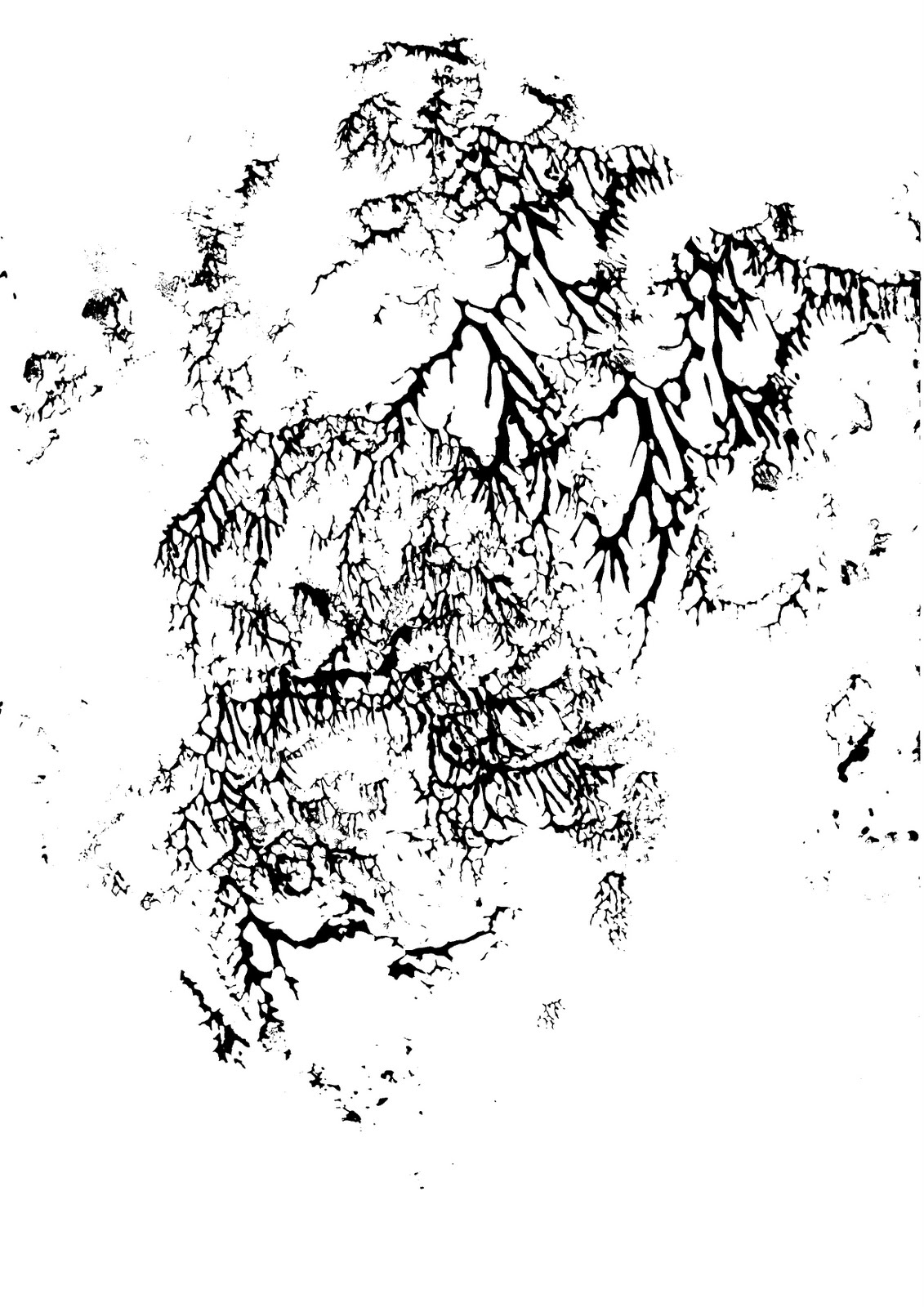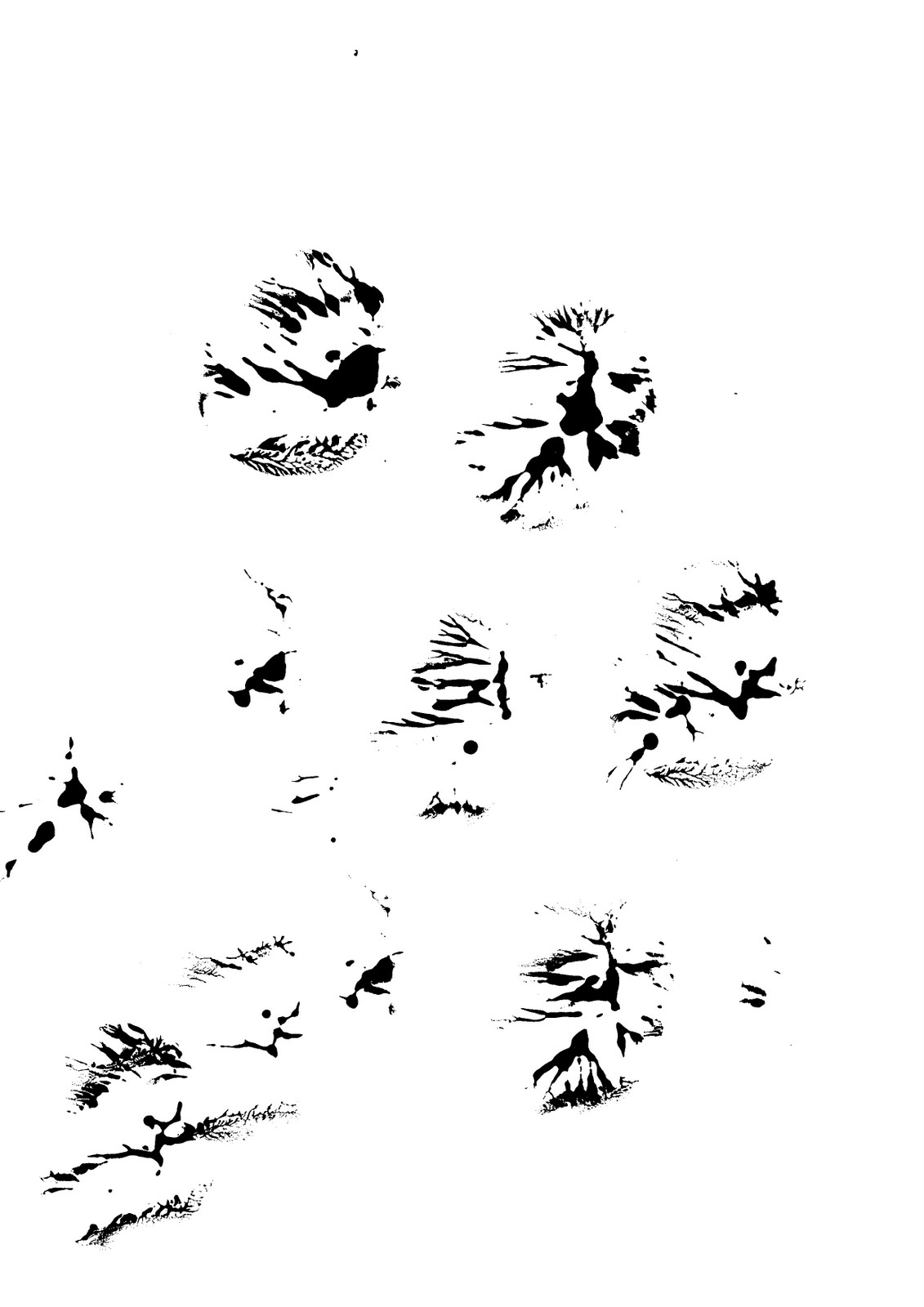Allan Kaprow (Atlantic City, EUA, 1927-2006)
Satisfaction
New York, M. L. D’Arc Gallery, 1976
Text and design by Allan Kaprow
Photographs by Bee Ottinger
16 p.,
27.9 x 21.5 cm.
Artist’s book by Allan Kaprow documenting his happening Satisfaction, which took place in April 1976. Book comprised of images and texts by Kaprow that outline the happening. “Ordinarily, we want and manage to get a certain amount of attention from the world all of our lives. The kind, manner and quantity may change, but in any case it’s attention. It follows that others want attention from us. A sort of acknowledgement-economics is involved, a trade-off, usually with a profit motive. We would like (unconsciously of course) to get more that we give…”
Four actors–two male, two female–perform short scripts by Kaprow in which they must seek, give, or deny attention to one another. Carried out by four groups of four in 1976 in New York, this book documents one group’s performance of Satisfaction with black and white photographs and reproductions of the scripts. In a short essay at the back, Kaprow discusses the range of complex social and emotional interactions this deceptively simple exercise can (and is meant to) bring out in its participants.














